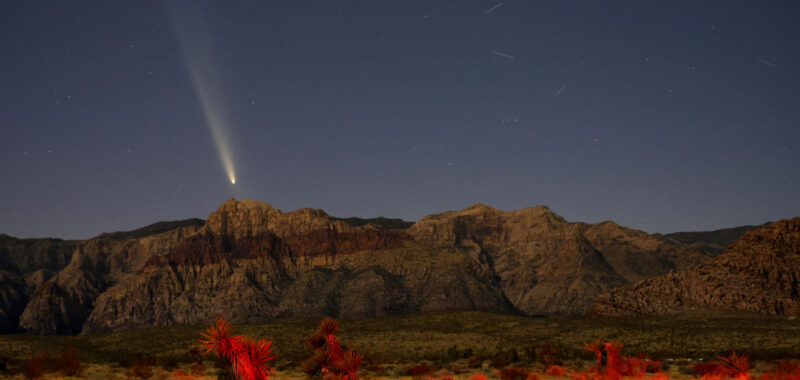Or no time at all. ’Oumuamua, the odd little object that visited our solar system in 2017, was discovered not before but after its closest approach to Earth. Although ’Oumuamua is an interstellar object, and not from the Oort Cloud, the proposition still applies; one of these objects could sneak up on us, and the Earth would be defenseless.
One way to prepare for these objects is to better understand their basic properties, including their size and composition. Toward this end, my colleagues and I work to characterize new long-period comets. The largest known one, Bernardinelli–Bernstein, discovered just three years ago, is roughly 75 miles (120 kilometers) across. Most known comets are much smaller, from one to a few miles, and some smaller ones are too faint for us to see. But newer telescopes are helping. In particular, the Rubin Observatory’s decade-long Legacy Survey of Space and Time, starting up in 2025, may double the list of known Oort Cloud comets, which now stands at about 4,500.
The unpredictability of these objects makes them a challenging target for spacecraft, but the European Space Agency is preparing a mission to do just that: Comet Interceptor. With a launch planned for 2029, the probe will park in space until a suitable target from the Oort Cloud appears. Studying one of these ancient and pristine objects could offer scientists clues about the origins of the solar system.
As for the comets now in Earth’s vicinity, it’s OK to look up. Unlike the comet in the DiCaprio movie, these two will not crash into the Earth. The nearest Tsuchinshan-ATLAS will get to us is about 44 million miles (70 million kilometers); C/2024 S1 (ATLAS), about 80 million miles (130 million kilometers). Sounds like a long way, but in space, that’s a near miss.
James Wray is Professor of Earth and Atmospheric Sciences at Georgia Institute of Technology
This article is republished from The Conversation under a Creative Commons license. Read the original article.

